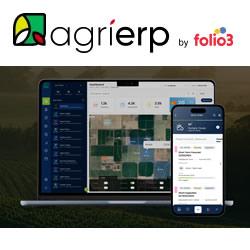Highlighting Adaptive Practices for Climate Resilience in Agriculture
.jpg)
Climate resilience refers to the agricultural system’s ability to recover from the impacts of climate change and even withstand them. This goes far beyond simply adapting to the new conditions. Instead, it involves building both flexible and robust farming practices that can adapt to the climate change patterns as they shift.
Understanding What Climate Changes Mean for Farms
You know how sometimes rain doesn't come when it should, and other times it comes too much? And how the air seems to be getting warmer? These things are part of climate change, making regular farming methods no longer work. New, smarter ways of farming are needed that can handle these changes.
Why Changing the Way Farms Work is a Big Deal
For people working in farming, changing how things are done is important. Better farming methods are needed in the long run. This means using techniques that keep the soil safe from washing away and help plants get the right nutrients. It also means ensuring many different kinds of plants and animals are on the farm and not wasting water.
Governments and other important groups also need to help out. They can support research to find new farming tools that work well in changing climates. They can also provide support to encourage the adoption of these new methods.
Sharing Good Ideas with Farmers
People who know a lot about farming have some great ideas. They want to show farmers new tools and tricks to help them deal with changing weather. One way to do this is by having events like trade show displays where these ideas are shown off. Farmers can see new machines cool technologies, and get advice from experts. These events are about learning and making friends with other farmers and experts.
The Use of Sustainable Farming Techniques
Sustainable farming techniques can go a long way when it comes to helping farmers overcome the challenges that lie ahead related to climate change. Adopting innovative practices, such as agroforestry, precision farming, and conservation agriculture, can be beneficial.
Agroforestry involves integrating trees into the existing agricultural systems. This will help provide shade for crops and livestock while sequestering carbon from the atmosphere. Precision farming involves using technology, such as sensors, drones, or even GPS mapping, to optimize irrigation and fertilization applications. This will dramatically reduce water waste and minimize nutrient runoff into nearby bodies of water. Many benefits come along with cover cropping. This technique improves soil health by adding organic matter back into the soil and fixing nitrogen.
Farms have a big challenge because of the changing climate. But people who work in farming can take the lead in finding solutions. By trying new ways of farming, using good ideas, and working together, farms can be ready for whatever the climate throws their way. It's like making a puzzle – each piece (or idea) helps to solve the bigger picture. So, farming in a changing climate is all about being smart, trying new things, and making the best choices for the future.
Connor Bartholomew is CEO of Trade Show Display Depot, a factory-direct seller and manufacturer of trade show displays and exhibits, tabletop displays, floor displays, and fixtures. Trade Show Display Depot has 20 years of experience designing, manufacturing, and shipping portable trade show exhibits.
Comments (0)
This post does not have any comments. Be the first to leave a comment below.
Featured Product

